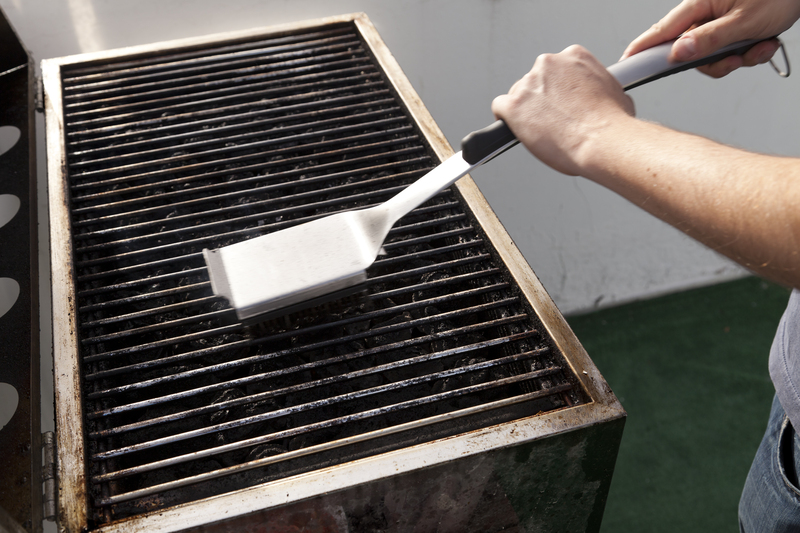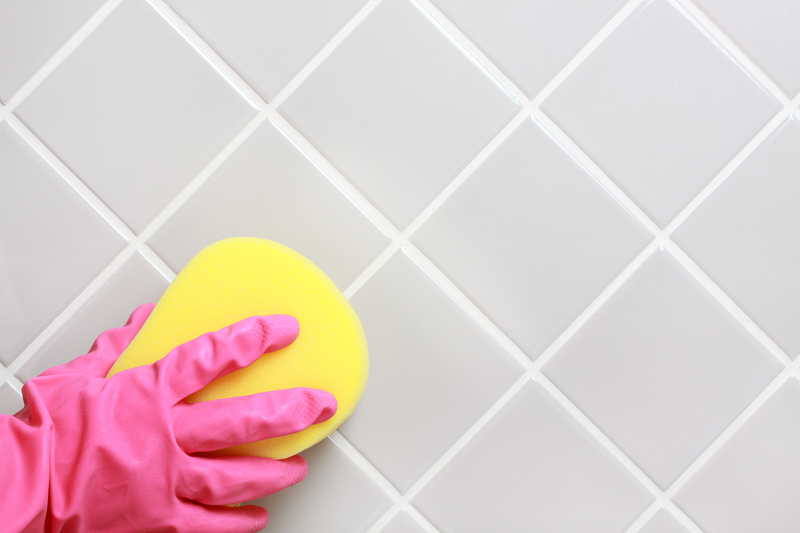Wave Away Grease: Simplified Steps to Clean Enamel Oven Trays
Posted on 28/09/2025
Wave Away Grease: Simplified Steps to Clean Enamel Oven Trays
Are you frustrated with stubborn, greasy residues clinging to your beloved enamel oven trays? If so, you're not alone! Over time, your enamel baking and roasting trays can accumulate baked-on grime and sticky grease, making them look unsightly and potentially affecting the flavor and safety of your food. Wave away grease for good with our in-depth, simple steps to clean enamel oven trays.
In this comprehensive guide, we'll walk you through the best methods to effectively clean and restore the brilliant shine of your enamel oven trays. Whether you're tackling recent spills or deep-set, baked-on grease, you'll find practical solutions designed to suit your needs. Read on to discover quick fixes, long-term maintenance advice, and natural remedies for sparkling, grease-free enamel trays.
Why Is It Important to Keep Enamel Oven Trays Clean?
Before diving into the cleaning process, let's understand why maintaining clean enamel oven trays matters:
- Hygiene: Greasy trays can harbor bacteria and affect your food's safety.
- Performance: Burnt residues can interfere with heat distribution, causing uneven cooking.
- Longevity: Regular cleaning helps preserve the enamel coating and extends your tray's lifespan.
- Flavor: Old grease can impart unwanted tastes and odors to your dishes.
- Aesthetics: Clean trays look more inviting and professional in your kitchen.
Neglecting proper cleaning can lead to irreversible damage or the need for costly replacements.

Understanding Enamel Oven Trays
Enamel trays feature a layer of fused glass coating on a base metal, most often steel or cast iron. This smooth, glossy finish is not only attractive but offers several advantages:
- Non-porous surface: Resists absorption of stains and odors.
- Scratch resistance: Keeps trays looking new when cared for correctly.
- High heat tolerance: Ideal for baking, roasting, and grilling.
However, enamel can be sensitive to harsh abrasives, thermal shock, or potent chemicals. The methods below ensure you're harnessing safe yet effective ways to wave away grease and grime from your enamel trays.
Simplified Steps: How to Clean Greasy Enamel Oven Trays
1. Gather Your Cleaning Supplies
Before starting, you'll need the following materials:
- Warm water
- Mild dish soap or liquid detergent
- Baking soda (sodium bicarbonate)
- White vinegar
- A non-abrasive sponge or microfiber cloth
- A soft-bristle brush
- Plastic scraper or silicone spatula
- Rubber gloves (to protect your hands)
- Paper towels or a clean, dry towel
2. Quick Initial Rinse
As soon as your tray has cooled down, remove loose crumbs and food particles:
- Allow the tray to come to room temperature (never clean hot enamel directly under cold water - this can cause cracking!).
- Rinse off surface residues under warm running water.
- Wipe with a damp cloth to clear away as much grease as possible.
3. Soak to Loosen Baked-On Grease
For stubborn stains and oily spots:
- Fill your sink or a large basin with hot, soapy water.
- Submerge the enamel tray completely. For large trays, soak in stages.
- Let the tray soak for at least 30 minutes (up to several hours for heavily soiled trays).
Soaking is key in breaking down tough, baked-on grease and grime without the need for harsh scrubbing.
4. The Baking Soda Paste Method
If soaking hasn't removed all the greasy build-up, it's time for the magic of baking soda:
- Make a thick paste by mixing 3 parts baking soda to 1 part water.
- Spread the paste generously over greasy or burnt areas.
- Leave for 20-30 minutes (for severe stains, up to one hour).
- Gently scrub with a soft-bristle brush or a non-scratch sponge.
Baking soda acts as a mild abrasive and a natural degreaser, breaking down stubborn grease while protecting the enamel finish.
5. The Vinegar Spray for Additional Grease Removal
For extra cleaning power:
- Mix equal parts white vinegar and water in a spray bottle.
- Spray directly onto any persistent grease or stained sections.
- Allow it to fizz and sit for about 10 minutes.
- Wipe with a microfiber cloth or sponge.
Vinegar's acetic acid dissolves fatty, greasy residues, leaving your enamel oven tray sparkling clean!
6. Gentle Scrubbing and Handling
After soaking, paste, or vinegar treatment:
- Use a silicone or plastic scraper for any leftover residue (never use metal - it can scratch the enamel coating!).
- Wipe gently in circular motions with a non-abrasive sponge.
- For corners and edges, use an old toothbrush.
Always avoid steel wool or abrasive pads on enamel trays to prevent chipping, scratches, or dullness.
7. Rinse and Dry Properly
Once clean:
- Thoroughly rinse off all soap, paste, or vinegar using warm water.
- Wipe dry with a soft towel or allow to air dry in a dish rack.
- Check for any lingering grease. If needed, repeat steps 4-6 on stubborn spots.
Expert Tips for Easy, Effective Cleaning
- Act Fast: The quicker you address spills, the easier they are to remove!
- Line Trays When Possible: Using parchment paper, silicone mats, or foil reduces direct contact and simplifies post-use cleanup.
- Use Minimal Detergent: Excess soap can leave residues; a small amount is usually all you need.
- Test First: If trying a new cleaner, always test a small, inconspicuous area first.
- Avoid Harsh Chemicals: Stay away from oven cleaners or bleach on enamel, which can damage or discolor trays.
Natural Methods to Wave Away Grease on Enamel Oven Trays
For eco-friendly and food-safe cleaning, consider these natural alternatives:
- Lemon Juice: The natural acidity of lemon dissolves greasy marks and freshens your tray.
- Salt Scrub: Sprinkle coarse salt on stubborn spots, rub gently with a damp cloth for extra abrasion.
- Cream of Tartar: Mix with water for a powerful yet gentle paste on burnt stains.
These solutions are not only effective but leave no strong chemical odors on your kitchenware!
How to Deep Clean Extremely Greasy or Burnt Enamel Trays
If your enamel oven tray is extremely greasy or burnt, follow these extra steps:
- Boiling Water Soak: Place the tray in your sink and fill with boiling water. Add mild dish soap and 1/2 cup baking soda. Let it soak for 1-2 hours. This helps loosen the toughest residues.
- Oven Cleaner for Enamel: Only if recommended by the manufacturer, a gentle, enamel-safe oven cleaner may be used. Rinse thoroughly afterward.
- Oven-Baked Baking Soda: Sprinkle a generous layer of baking soda on the dry tray, then heat at 100?C (210?F) for 15 minutes. Allow to cool, then rinse and wipe.
- Repeat as Needed: For very heavy build-up, persistence is key. Repeat the natural methods and avoid using sharp or metal objects.
Maintenance Tips: Keep Enamel Oven Trays Grease-Free
- Regular Cleaning: Wash your enamel trays promptly after use to prevent buildup.
- Avoid Thermal Shock: Don't put hot trays under cold water; let cool first to avoid cracks in the enamel.
- Proper Storage: Store trays thoroughly dry, stacked with protective liners or towels in between to avoid chips and scratches.
- Inspect Frequently: Look for signs of enamel damage. If chips are found, use trays for non-food purposes or recycle responsibly.
Common Mistakes When Cleaning Enamel Oven Trays
- Using Hard Scrapers: Metal or hard plastic can scratch the enamel finish.
- Employing Abrasive Powders: Stick to baking soda and avoid harsh commercial abrasives.
- Neglecting to Dry: Always dry trays fully to avoid water spots or rust on exposed edges.
- Leaving Grease Too Long: The longer grease sits, the harder it is to remove.

FAQ: Wave Away Grease from Enamel Oven Trays
Can I put my enamel oven trays in the dishwasher?
Most modern enamel trays are dishwasher-safe, but check the manufacturer's instructions. Hand washing extends the life of your enamel, prevents chipping, and ensures thorough grease removal.
How often should I clean my enamel trays?
After every use for best results, especially if you're cooking fatty foods. Quick wipes between batches help, too.
Why is my enamel tray still sticky after washing?
Sticky residue means grease wasn't fully dissolved. Try another hot soak with dish soap and baking soda, then rinse thoroughly.
Is it safe to use vinegar and baking soda together on enamel?
Yes! The fizzing reaction loosens grease naturally and is safe for enamel surfaces when rinsed well.
Conclusion: Make Cleaning Enamel Oven Trays Easy!
Wave away grease and keep your enamel oven trays looking their best with these simple, proven steps. By acting quickly, using mild cleaners, and avoiding harsh tools, you'll maintain your trays' brilliant shine and get the most out of your baking and roasting. Implement these strategies every time you cook, and you'll spend less time scrubbing--and more time enjoying delicious, perfectly cooked food.
Happy cleaning, and may your enamel trays stay sparkling and grease-free!





